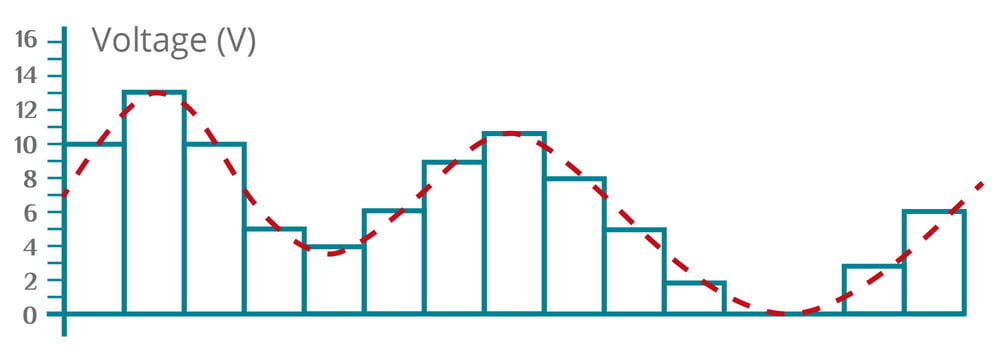3. Functionality
Traditional Soundcard
The FM and wavetable chips found on the traditional soundcard are largely redundant these days. Modern games and multimedia applications use digital audio for both the music and sound effects, and the quality of software synthesisers and instruments driven by the computer's power has far outstripped what you could squeeze onto a chip. It is now very rare to find hardware synthesiser chips on any soundcards designed for music production - the focus is purely upon digital audio.
Digital Audio Interfaces
Audio Interfaces provide the way for audio signals to pass into and out of the computer. For the computer to understand analogue sound, it must be measured at set intervals to produce a whole value that can be described in the computer's binary language. This measurement is called 'sampling', and the intervals at which the sampling occurs is called the 'sample rate'. To get an accurate picture of an analogue sound wave it must be sampled many times a second, for instance, the standard sample rate for CDs is 44.1kHz or 44,100 times a second. Another factor is the range of whole numbers that can be assigned to a particular sample. This is defined in bits; a bit being the 1 or 0 of binary. 16 bit is the standard for CDswhich, when described in binary (2 to the power of 16), can represent values between 0 and 65,535. Once the analogue audio has been sampled then the computer can use it and manipulate it.
For playback the process is reversed. The interface takes the binary values and recreates a continuous analogue waveform that is fed through your amp to your speakers.
In either case, a conversion or transformation has occurred from analogue-to-digital (ADC) or from digital-to-analogue (DAC). The quality or accuracy of these conversions is largely, but not exclusively, down to the quality of the electronic components contained in the audio interface.

The arriving analogue audio signal
The arriving analogue audio signal

digital audio signal
Each time the signal is sampled by the ADC it is assigned a whole value
The digital audio...

binary information
... in binary as understood by the Computer.
One other important factor can come into play clocking. The accuracy of the timing of the sampling has an effect on the quality of the sound recorded and played back. When transferring digital audio between two digital machines, their sample rates must clock so that they run in sync with one another.





